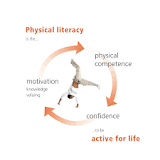
MUMBAI: There was a time when India’s challenge was literacy. From an abysmal low of under 20% in 1951 we are now close to 80%. Over the last decade, ubiquitous digital literacy has become the aspiration. This is indeed desired, for the population to gainfully participate in today’s online world.
But, as a country we have pitifully ignored a third essential literacy – physical literacy.
Margaret Whitehead, who coined the expression, describes it as the “motivation, confidence, physical competence, knowledge and understanding to value and take responsibility for maintaining physical pursuits through the life course”.
Physical literacy has to be imparted at a young age. Schools in India by and large have not understood it. In most cases, they have restricted themselves to a customary physical training class, once a week. Urban schools, more interested in enrolments, provide multiple sports as options, without an understanding of which sport is appropriate for which age group. Parents, who take private initiative, are more driven by aspirations for their children to emulate the sports-stars of the time.
But, much before becoming a star comes the making of a star. Just like literacy begins with the alphabet, physical literacy also has an alphabet. This alphabet comprises the most basic physical activities like running, jumping, throwing or kicking. It appears simple. But hark back to your childhood, and you will recall that you were not trained in any of these activities.
This physical literacy development also has to begin at primary schools. In a pyramid process, fundamental physical literacy must progress to sports of different kinds. Many progressive countries like Canada, the USA, Australia, follow this process. The results of the rigour is visible in their sporting achievements, cutting across disciplines.
A coordinated physical literacy approach will have several benefits. The first of them will be making physical activity a lifestyle for young children. Secondly, it will be easier to spot talent in a more organised and broad-based manner, and then direct them to sports they are naturally inclined towards. Finally, it will be an antidote to the burden of lifestyle diseases which are becoming a burgeoning problem as India is becoming more prosperous.
Generations in India have been used to PT – physical training. But in a ranking of medals: population ratio, in any respectable international sporting event, we are still at zero. The solution lies in a structured approach to developing sporting talent, starting with physical literacy in school from age 6 onwards.
In the primary years (ages 6 to 9), physical activities should, as a discipline, be the ones which are common to everyone and do good for the entire life course, whether one becomes a sportsperson or not. Lifetime activities which develop these fundamental movement skills, like jumping, running, throwing, catching, dodging, are literally the alphabet of physical literacy. These can be taught through free play, dance forms and games from the local culture, which the children can connect to easily. Yoga, taught as animal poses, can become enjoyable for children, and yet improve flexibility and strength. Overcoming space constraints, even a non-contact team sport, like Frisbee can become a highly popular way of teaching the alphabet of physical literacy. The focus should be on individual development and not on competitiveness.
Age 10 to 14 is the time to introduce them to sports. With fundamental movement skills already developed, it is easier to introduce sports which need co-ordination of all these basic skills at the same time. The children in this age group are less inhibited and more open to exploring different options without worrying about success and failure.
The choice of sport, however, is very important. Choice should be determined by those that are played or followed in the region. For example, in Jharkhand, children are more tuned towards hockey and football; basics of those games should be introduced in the schools. Cutting across regions, athletics, Kho kho and Kabaddi are excellent games from our culture, which require no equipment, but only speed, agility and teamwork.
Typically, by the time children hit puberty, they get more conscious about their bodies and other’s perception about their abilities. Physical activity in children from age 14 generally declines, those who are good, continue to play sports. The effort should be to align them with specialised academies to further hone their talent and fully develop their potential.
But for others, a strong foundation in physical literacy inculcated in the yearly years will make a huge difference in being naturally inclined towards a healthy and active lifestyle.
The Article has been authored by Neelam Babardesai, head, Sports, Tata Trusts
- Log in to post comments
